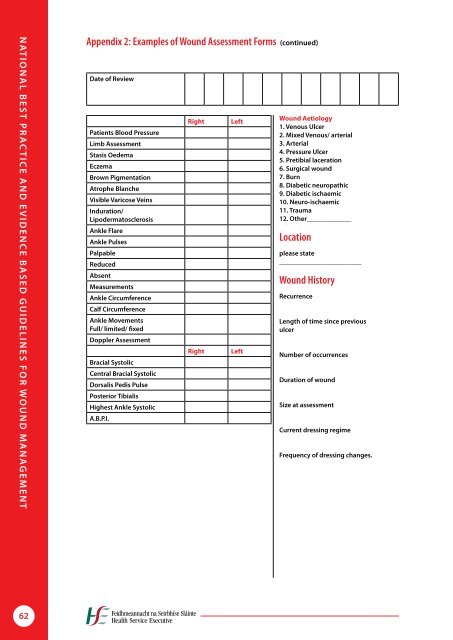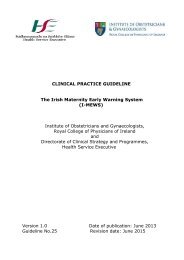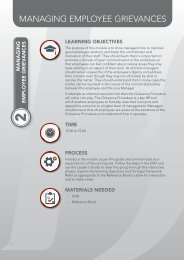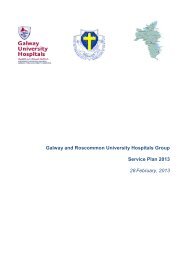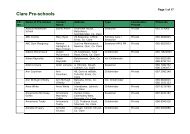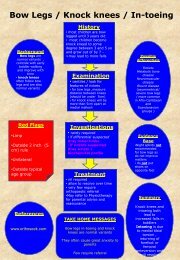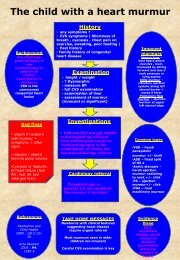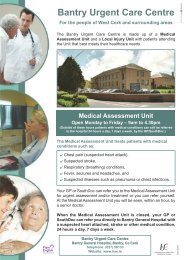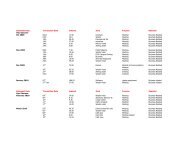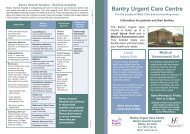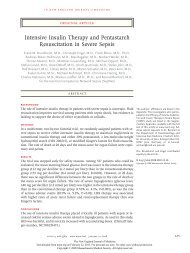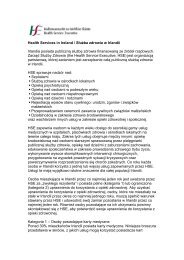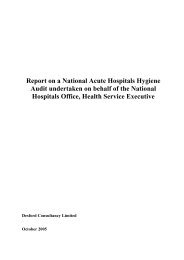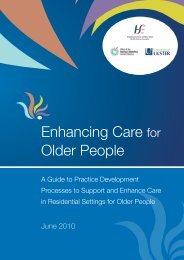National best practice and evidence based guidelines for wound ...
National best practice and evidence based guidelines for wound ...
National best practice and evidence based guidelines for wound ...
You also want an ePaper? Increase the reach of your titles
YUMPU automatically turns print PDFs into web optimized ePapers that Google loves.
NatioNal <strong>best</strong> <strong>practice</strong> aNd evideNce <strong>based</strong> guideliNes <strong>for</strong> wouNd maNagemeNt<br />
62<br />
Appendix 2: Examples of Wound Assessment Forms (continued)<br />
date of review<br />
patients blood pressure<br />
limb assessment<br />
stasis oedema<br />
eczema<br />
brown pigmentation<br />
atrophe blanche<br />
visible varicose veins<br />
induration/<br />
lipodermatosclerosis<br />
ankle flare<br />
ankle pulses<br />
palpable<br />
reduced<br />
absent<br />
measurements<br />
ankle circumference<br />
calf circumference<br />
ankle movements<br />
full/ limited/ fixed<br />
doppler assessment<br />
bracial systolic<br />
central bracial systolic<br />
dorsalis pedis pulse<br />
posterior tibialis<br />
Highest ankle systolic<br />
a.b.p.i.<br />
Right Left<br />
Right Left<br />
Wound Aetiology<br />
1. venous ulcer<br />
2. mixed venous/ arterial<br />
3. arterial<br />
4. pressure ulcer<br />
5. pretibial laceration<br />
6. surgical <strong>wound</strong><br />
7. burn<br />
8. diabetic neuropathic<br />
9. diabetic ischaemic<br />
10. Neuro-ischaemic<br />
11. trauma<br />
12. other_____________<br />
Location<br />
please state<br />
________________________<br />
Wound History<br />
recurrence<br />
length of time since previous<br />
ulcer<br />
Number of occurrences<br />
duration of <strong>wound</strong><br />
size at assessment<br />
current dressing regime<br />
frequency of dressing changes.


